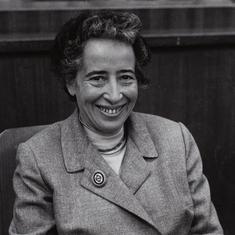In a Wimbledon draw where a 15-year-old qualifier shone the brightest and a 37-year-old is storming through, a 33-year-old making the semi-finals may not really stand out.
Except, Barbora Strycova is the oldest first-time Major semi-finalist in the Open Era, overtaking Roberta Vinci, who was 32-years-old when she reached the 2015 US Open semi-final and famously ended Serena William’s unbeaten Grand Slam streak that year.
This is her 16th main draw appearance in singles at Wimbledon, the 53rd main draw at a Grand Slam and she has never gone beyond the quarter-finals she had reached at Wimbledon in 2014... till Tuesday.
Serena Williams awaits for a place in the #Wimbledon final…@BaraStrycova is into her first ever Grand Slam semi-final after beating Johanna Konta pic.twitter.com/vHPxMvFwV7
— Wimbledon (@Wimbledon) July 9, 2019
In a testament to how unpredictable the ladies singles draw can be, the last four players standing at Wimbledon are a two former world No 1 and two first time Major semi-finalists. But 33-year-old Strycova’s presence here is a testament to her years of hard work, the value of variety on grass, and perhaps most importantly, her fighting mentality.
The Czech world No 54 is a crafty player on court, moves well, slices even better and has shots that can throw opponents off their game. She is also an extremely smart customer and can win points in various ways with her mixed bag of tricks. Her game is further honed on the doubles court as she uses her angles to perfection when she gets going.
All of these abilities are magnified on grass, where she loves to serve and volley. They have served her well in doubles so far, and has now taken her to uncharted territory at her favourite tournament.
In the quarter-final against 2017 semi-finalist Johanna Konta, she trailed 4-1 in the first set but broke back for 4-3 before clinching the tiebreaker. She then raced to a lead in the second and through it all, she made only nine unforced errors (three doubles faults) to 22 winners. The 33-year-old was in similar trouble in the last match trailing by a set 2-5 against 21st seed Elise Mertens, but pulled back with an impressive win.
Strycova, who some Indians may remember as the former partner of Sania Mirza, has never reached a Grand Slam final in singles or doubles. She has two junior Australian Open titles – one of which came beating 2004 Wimbledon champion Maria Sharapova – but has never managed to translate the same success to the senior level.
In fact, she was thinking about retirement before this Wimbledon, saying this may be her last. But the way she has stormed through the draw to set a clash with Serena Williams may make her change her mind.
Strycova. Maiden major singles semifinal. Retirement will have to wait.#Wimbledon pic.twitter.com/4cuHXfZZHE
— Ashish TV Slams (@ashishtvslams) July 9, 2019
In her five matches, she has knocked out four seeds – Lesia Tsurenko, the 32nd seed, in the first round, fourth seed Kiki Bertens in the third followed by Mertens – in her only three-setter so far – before taking out 19th seed Konta on Centre Court. Meanwhile, she is in doubles quarter-final as well, where she is seeded third with a partner with an equally eye-catching game Hsieh Su-Wei, playing two matches a day.
What sets her apart is her ‘tricky’ style of play. On any other surface, she may not have had a run like this. Her best in singles at other Majors is the fourth round at Australian and French Open and third round at the US Open.
But the doubles World No 3, with her serve and volley style, soft hands and swift touches has finally cracked the last four at Wimbledon.
According to the New York Times, the Czech player has serve-and-volleyed on 20% of points, which is significantly higher than any other woman in the draw. (The next-closest is 14 percent)
Konta, her last opponent, perhaps assessed it best. “She moves very well, so she gets a lot of balls back. She asks you a lot of questions with a lot of balls. She’s able to move the ball around in kind of a tricky way. She can slice really well. She can slow the game down quite well. She I think gives her opponents every opportunity to not feel great out there.”
Strycova: "I set this goal at the beginning of this year, that @Wimbledon will be the target that I want to really play well. It's happening right now, which is something really amazing.
— WTA Insider (@WTA_insider) July 9, 2019
"It shows you if I believe it, it's happening."
But the real difference this time has been her mentality, a mindset change that has got her this far at 33.
“For me, this tournament shows me that I can win over myself, over my emotions, over my character because I am a very emotional player, very emotional person. In the past, I couldn’t really control it. But now in these two weeks, I could accomplish something that I worked so many years with my mental coaches... This is a big win for me,” Strycova said after her win.
This Wimbledon will be a big win indeed, even if she doesn’t win her next match. Because at 33, Strycova has made true the beautiful adage we love to quote in sport – nothing is impossible.










